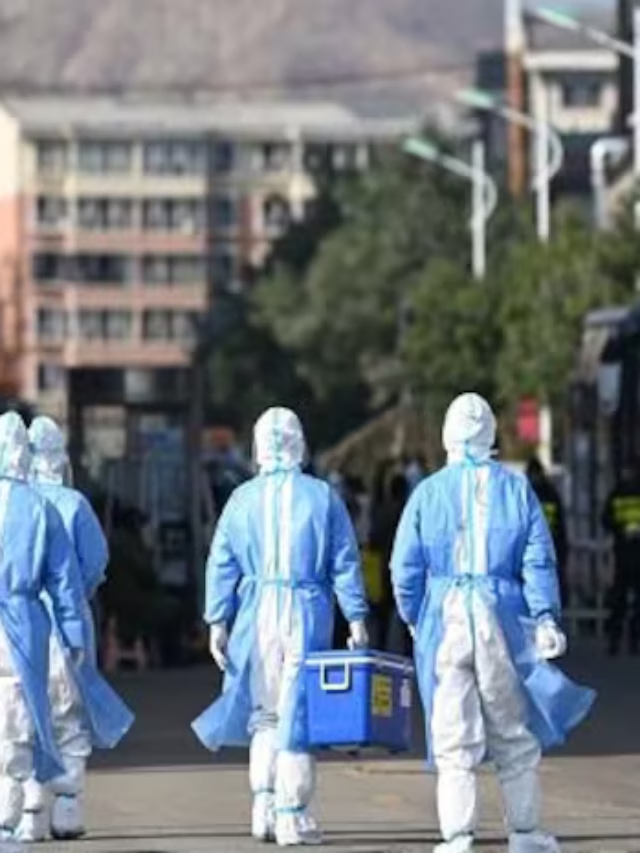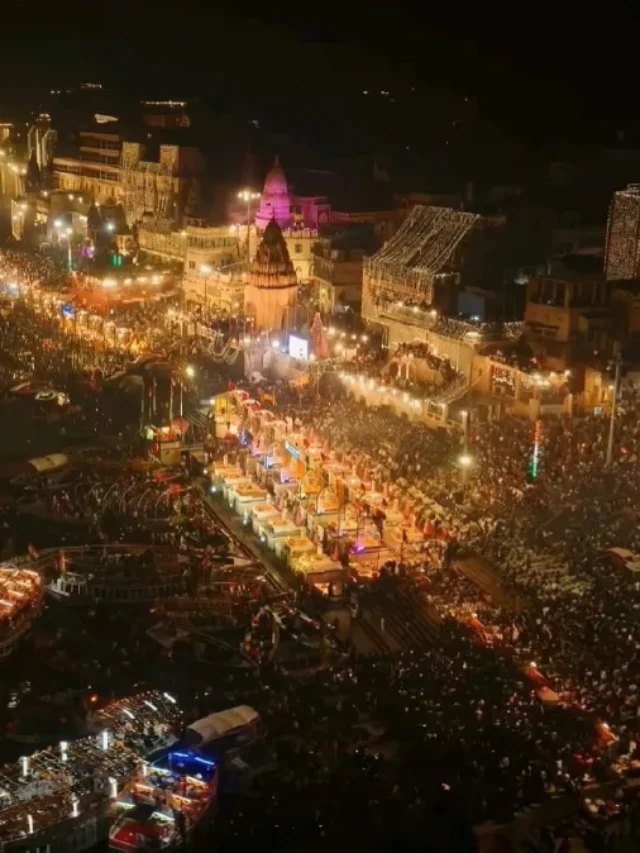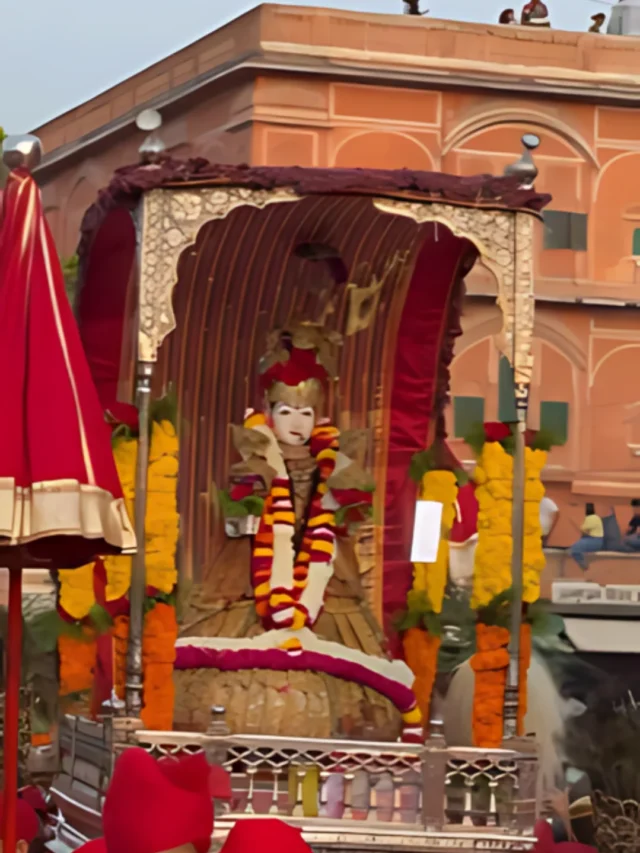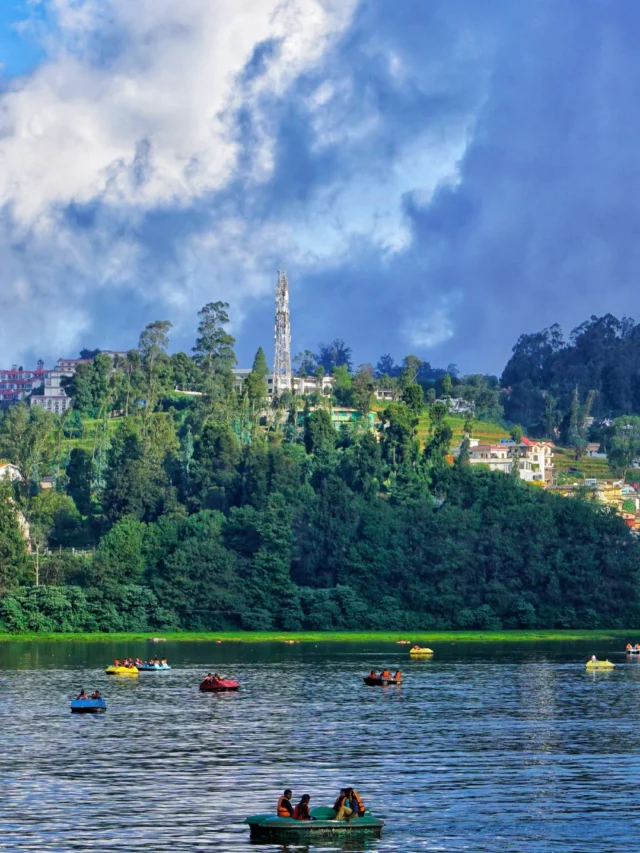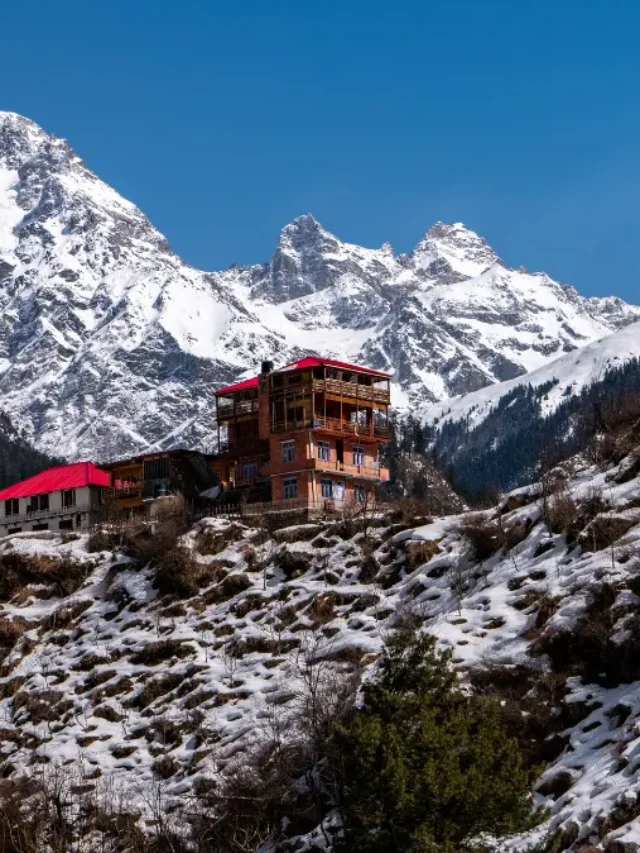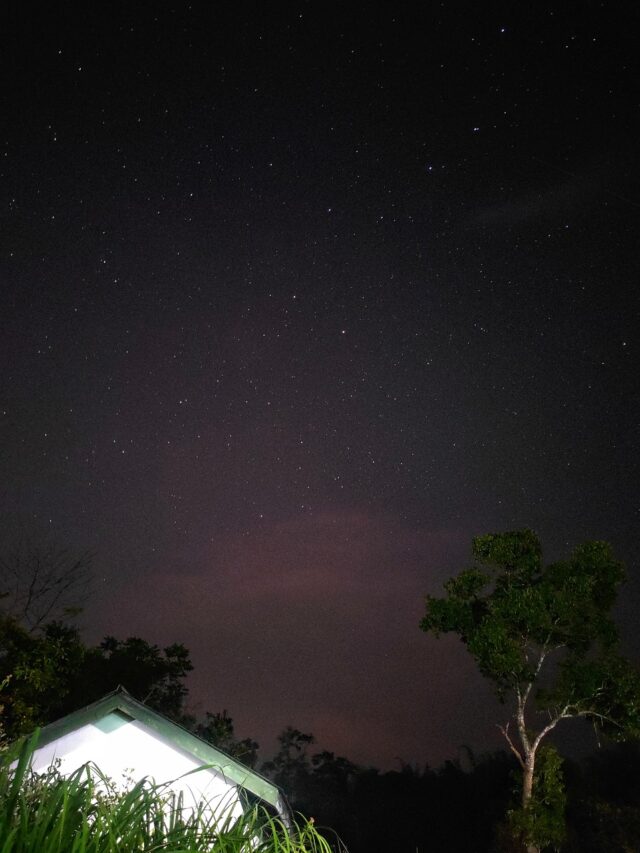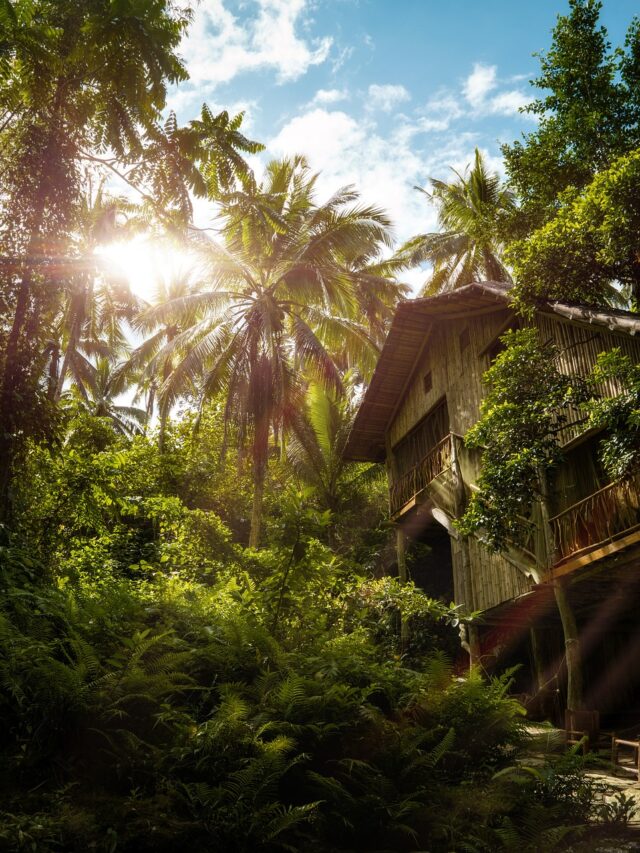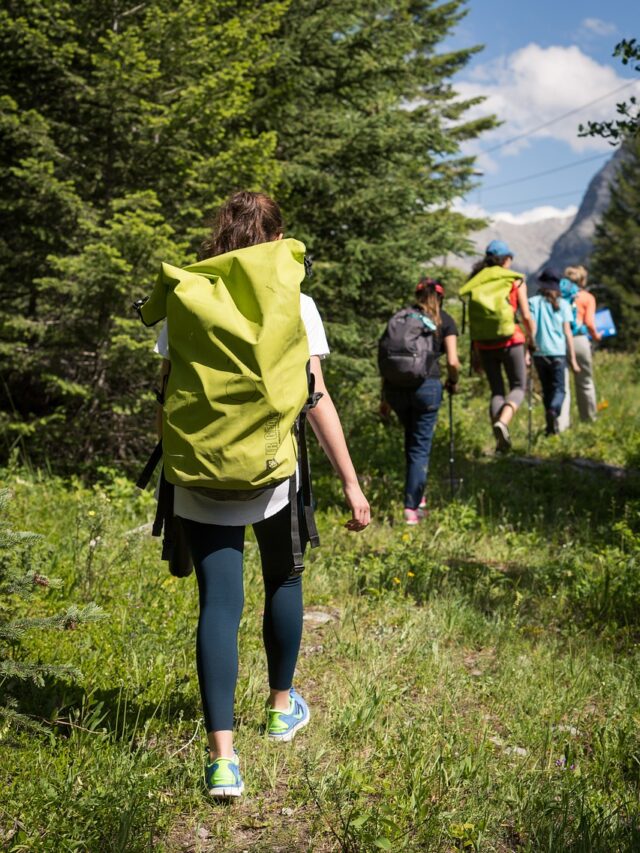Known as a land of peace and spirituality, Uttarakhand is a holy place in Northern India with several places of pilgrimage. Uttarakhand is the height of Hindu spirituality, deserving of the moniker “Devbhumi,” or “Land of the Gods,” from the famed “Chaar Dhaams,” like Badrinath, to the holy ghats along the Ganga River in Haridwar. But in all its spiritual splendour, this ‘Devbhumi’ hides a sinister side in the creases of its past: the legendary Lake of Skeletons, which sits within the picturesque surroundings of Chamoli.
This lake is accessible by a walk known as the Roopkund trek, which we’ll guide you through in this blog!
The Mystery Behind Roopkund Trek’s Famous Lake of Skeletons
The Chamoli district in Uttarakhand, home to the serene Valley of Flowers, conceals a sinister and perplexing enigma within its borders: the mystery of Roopkund Lake. A significant trip in the Chamoli area, Roopkund Lake is as enigmatic as they come. A forest official named H K Madhwal discovered hundreds of remains in and around Roopkund Lake under the British Raj. People were unaware of their origins or timing. Every year, the lake, a glacier, melts for a month, revealing these bones in the open. During World War II, British officials disregarded the remains, believing the bones to be those of Japanese invaders whom a hailstorm had hit. It was due to the deadly snowstorms that are common in the region where Roopkund Lake is located. However, further examining the bones found that they belonged to men, women, and children and that their ages ranged from around five hundred to eight hundred years. There was still meat on some of them. Other artefacts were discovered, such as a spearhead, bangles, and leather shoes. Aptly dubbed Skeleton Lake or The Lake of Skeletons, it remains a puzzling enigma waiting to be solved.
Since the bones were discovered, several experts have examined them, and numerous scientific and folkloric theories have been developed. Some speculated that the bodies belonged to Tibetan invaders or to holy men who had committed ritual suicide. A folktale about the Lake has been passed down through the decades among the inhabitants of Uttarakhand. Nanda Devi, an incarnation of Goddess Parvati, is supposed to have visited the kingdom of Kanauj, where she was met with disrespect and subsequently cursed the place. Fearing destruction, the monarch and queen, Raja Dhasval and Rani Balampa set out on a pilgrimage to the Nanda Devi Temple. One of India’s riskiest pilgrimages, the route to the temple passes across Jyumra Gali (The Path of Death) and Roopkund Lake. Raja Dhasval reportedly brought singers, dancers, and musicians with him for amusement instead of adhering to the formalities of a pilgrimage. This event incited Nanda Devi’s fury, which summoned a thunderstorm that killed the king, queen, and other people by plunging them into Roopkund Lake.
Attributing the bones’ extended preservation to the bitterly cold and frosty weather is possible. The good weather stopped the skeletons from rotting and assimilating into the ground. Numerous bodies fell into the lakes due to the frequent landslides in the region, where they remained very long. Compared to the bodies that stayed in the open, the ones that fell into the lake had a longer shelf life. It is still being determined, though, if these people were locals or had a specific goal in mind. There is no historical proof that there was a trading route to Tibet. As a result, it is challenging to determine the group’s true objectives.
The Roopkund Trek
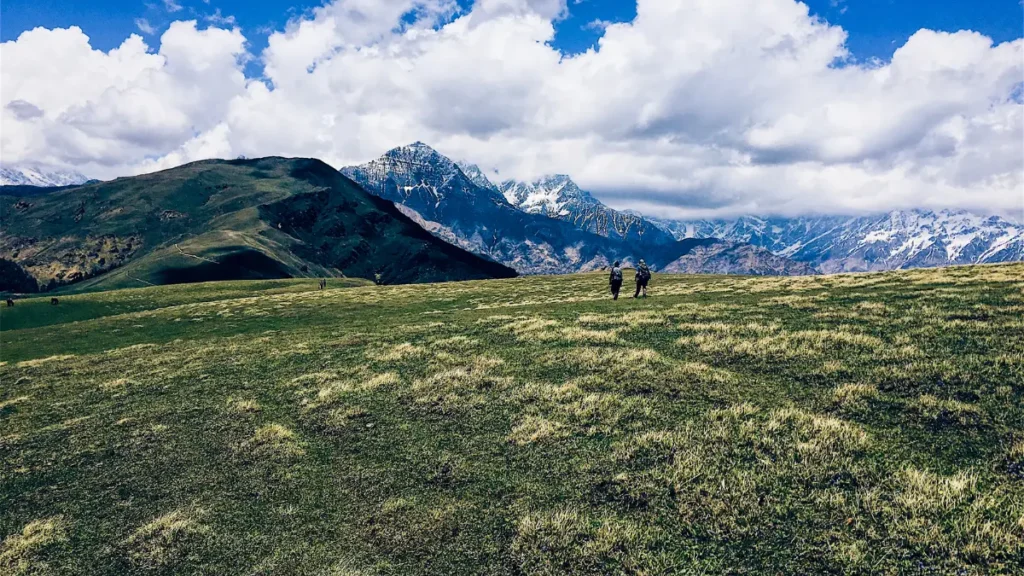
In the Himalayas, Roopkund is a charming, lovely, and alluring tourist attraction. Situated at the foot of Trishul and Nandighungti, two Himalayan peaks, this place draws adventurous people. Autumn brings religious celebrations that the other communities join at Bedni Bugyal’s alpine meadow. The lake is much more beautiful because of its constant layer of ice. Travelling there is delightful since mountains around the traveller from all directions. The opportunity to trek the Himalayas is another benefit of trekking in Uttarakhand. The Nanda Rajjat Yatra is an additional option.
The Roopkund hiking route begins in Lohajung. Because there are so many skeletons around the lake, the Roopkund Walk is often called the Skeleton Walk. Glaciers scattered with rocks and snow-covered mountains provide the background of this lake.
Choosing the Roopkund route when visiting India is an exciting tour that takes you through many breathtaking and unique locations. You’ll observe verdant, grassy fields and fir trees stretching to the hilly valley as you go toward the lake. Following that, the walk follows the path of the Pindar River. You will be able to enjoy the surrounding region’s lush, natural beauty and the relaxing wind that uplifts the whole area.
Several paths go to Roopkund. The most well-traveled paths taken by tourists and explorers go via Lohajung to the point where vehicle travel is feasible. The point at which you can start hiking is followed by the start of trekking. Plains, or level places, are another place to camp overnight. You should be able to see both Trishul and Bedni Bugyal if it’s clear. There are several pastures for sheep, horses, and mules on the route to Roopkund. Along your path, there are a few lakes and temples. The surrounding mountain slopes are home to a multitude of waterfalls. The surrounding mountain slopes are home to a multitude of waterfalls. Severe weather can occur anytime, so travellers should always be well-prepared.
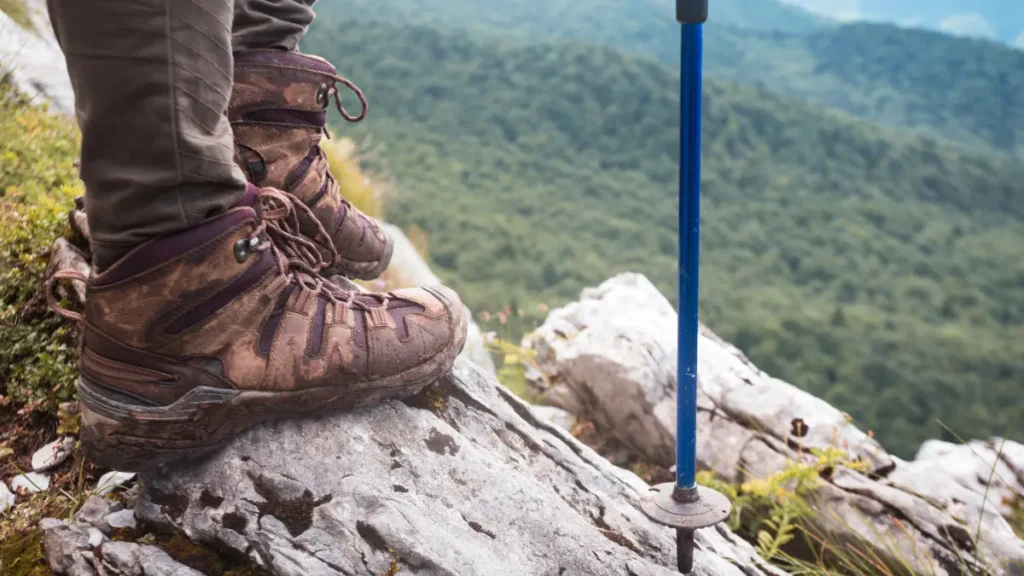
Rooplund Trek Itinerary
Day 1: Kathgodam to Lohagunj
The trip to Gwaldam in the Garhwal district travels through the Kumaon area and across deep valleys in the Shivalik mountain ranges. It takes around 10 hours, with a few pauses. Despite being shorter at 11 km, the direct roadway from Gwaldam to Deval via Nandkesri is not advised because of damage from persistent rain. Rather, taking the longer but safer route via Tharali (about 36 km) is best. The journey ends at the settlement of Deval, which has all the necessities. The last part of the journey from Deval to Lohajung is an exhilarating climb over a narrow road frequently covered in rain and clouds as the temperature stays exceedingly low. Along the route, nights are usually spent in motels or lodges.
Day 2: Lohaganj to Didna
After a filling breakfast, set off on the walk, which will take you through the town of Wan on a level stretch of the jeep route before ascending slightly. To get to the peaceful village of Kulling in the Garhwal area, which is surrounded by stunning scenery and teaming with exotic species, it is a 6-kilometre trek. After resting in Kulling, continue to the village, navigating between houses and farms as you bridge the Neel Ganga River. After crossing the cemented bridge, a difficult track climbs the left ridge to the 2450-meter-high Didna. Huge trees and evergreen alpine woods may be seen throughout the path. Reaching the pinnacle of the ridge after a two-hour trek rewards stunning views of enormous open expanses surrounded by towering mountains. Nearby but unique Didna and Kuling suit various seasons; the day’s walk is around 10km and finishes by 3 pm, with a hot lunch in an old-fashioned guesthouse.
Day 3: Didna to Ali Bugyal
Set off on your journey via the quaint village of Ali Bugyal, which is home to some of the highest concentrations of people in the nation at an elevation of 3400 metres. Ali Bugyal is visible from Didna and is the summit of the mountain, accessible by climbing a modest incline from the settlement. Along the way, you’ll come across makeshift settlements like Tolpani, where the local shepherds and their enormous flocks of sheep put on a spectacular show. Two paths along the route go to the same place: a left trail that slopes more steeply and a right trail that climbs gradually. The area has breathtaking scenery, especially in the spring when the valley is covered with vivid rhododendrons, oak, and birch blooms. The spectacular Himalayan meadows of Ali Bugyal await you at the summit of the mountain, where vast grasslands greet you after a 3–4 hour trek. Summertime brings vibrant blossoms and wandering wild animals in the fields; on clear days, the peaks of Trishul and Mrigthuni appear on the horizon. On the third day, campers travel up a little hill to Bedni. If the weather is fine, visit the neighbouring Bedni Kund temple after lunch for expansive views of the Garhwal Himalayan mountains.
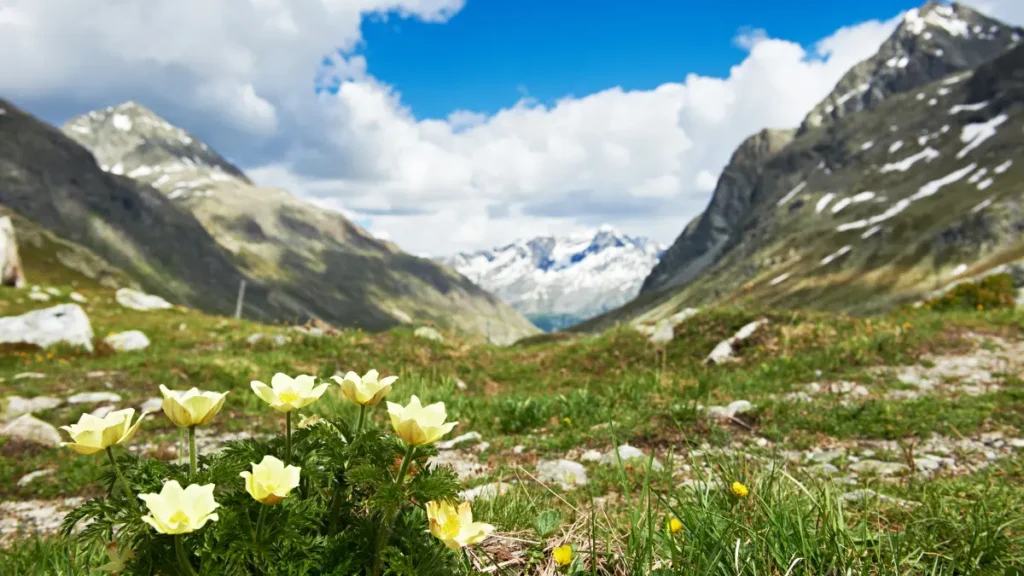
Day 4: Ali Bugyal to Ghora Lotani
Consider starting later on the fourth day to have a more laid-back morning. Ghora Lotani, your next camping, offers the perfect environment surrounded by stunning landscapes. Follow the path beyond the impassable Patat Nacholi, a less-travelled landmass. Due to the shifting weather and thin atmosphere, experience a challenging ascent from 12,500 feet to 14,500 feet. Even with sore legs, there’s enough inspiration from the breathtaking surroundings. Reach the camping area at Ghora Lotani after a 10-kilometre trek to guarantee a good night’s sleep.
Look forward to an exciting day that will inspire an early start the next morning.
Day 5: Ghora Lotani to Bhagwabasa and Roopkund
Make sure you get a substantial breakfast and an early start to prepare for the hardest day of the walk. Head uphill for 10 kilometres to Bagubasa, around 14,000 feet above sea level. The path passes via the Kalyuvinayak temple and features a strenuous 2 km rise with an elevation increase of around 200 feet. The terrain is rough and zigzag, so proceed cautiously and use the appropriate protection gear. Constructed conventionally, the temple bears witness to its centuries-long history. Take deep breaths as you ascend to reduce the risk of headaches and upset stomach. The temple’s exquisite stone sculptures and heavenly atmosphere create a singular experience. Admire the final destination, Roopkund, and nearby peaks like Trishul and Nandagunti from the temple’s stunning vistas. One kilometre further, the route leads to Bhaguabasa, which has several unusual qualities, such as flowers blooming seasonally. At 14,000 feet, the highest point provides a challenging yet fascinating landscape.
Day 6: Roopkund to Bedni Bugyal (The Return Journey)
Set off early to reach the highest point of the walk, Roopkund, at an elevation of more than 16,000 feet. Although there is little hard terrain, the four-mile trek may be tiring. A clearer path is made possible by lower snow density during the monsoon. Move from Bhaguabasa to Chhirianag, the serpent resembling a ladder, and arrive at Roopkund, the enigmatic Skeletons’ Lake. The many bones found on the lake bed, connected to legends of a deadly thunderstorm that struck the monarch on his way to Nanda Devi, continue to baffle archaeologists. Observe around three hundred human skulls along the lake’s edge. After a strenuous descent, stop by the Nanda Devi shrine for some unforgettable pictures. Depending on the weather, Climbers may attempt the treacherous 16,700-foot Junargali Pass ascent. Make your way back by Bhagwabasa, navigating sharp drops to arrive at 12,500 feet at Patar Nachuni. Trekkers must be determined to complete the gruelling 15-mile walk, which takes 10 to 15 hours and puts them into a well-earned deep slumber.
Day 7: Bedni Bugyal to Lohagunj
Return to the first camp on Day 01 on the last day of the hike, going up and down the well-trod path. After the previous days’ obstacles, the path along the right side feels quite easy. There are wooden cottages that indicate development. Select the right fork in the road to enter a woodland region with cool air and the calming sound of birds. The varying incline should cause hikers to proceed with caution. Take no shortcuts since the ground is uneven. Continue to Gahroli Patal and emerge at the Neel Ganga River. Arrive at Wan village, which resembles a mansion surrounded by mountains with spectacular views. Find a car waiting to take you there after a road trip; it will take 10 hours to go around 18 kilometres. After a bumpy one-hour ride from Wan, you arrive in Lohargunj, where you may relax in the guesthouse’s comfort and think back on your favourite hike memories.
Day 8: Lohagunj to Kathgodam
Get up at a decent hour, have a hot cup of tea, and have a delicious breakfast on the hill. We’re leaving for Lohargunj today, saying goodbye to the magical memories you’ve made. After you pack, take a cab to the Kathgodam railway station; the ride should take around ten hours. To prevent nausea throughout the journey, remember to pack pills and mints. Take a train to your destination at the Kathgodam station and have a memorable and enjoyable experience.
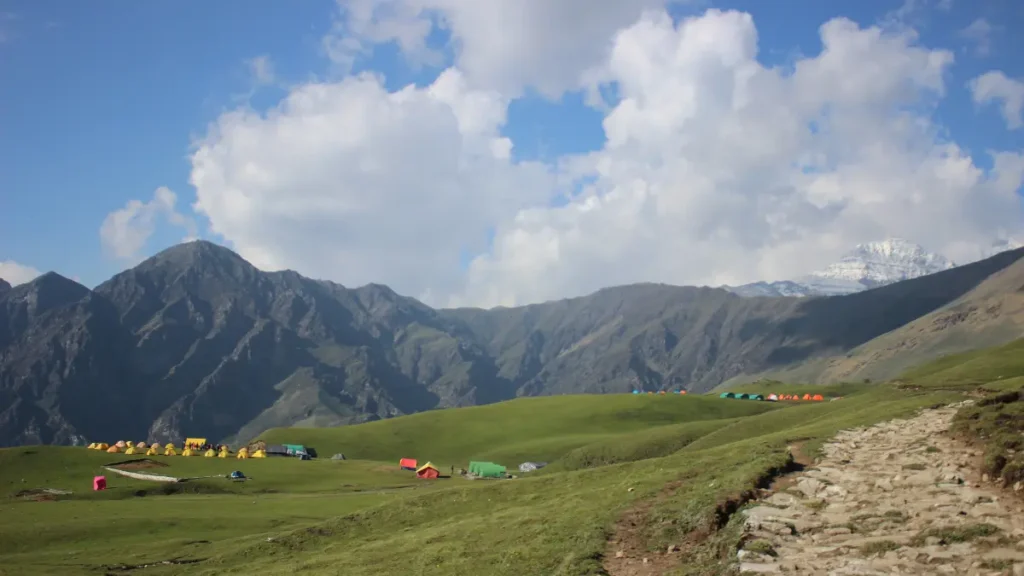
Is Roopkund Trek Open in 2023?
As the Roopkund trek was banned alongside a few other treks in Uttarakhand in 2018, it remains closed to the general public as of 2023.
Roopkund Trek Best Time
The best time to do the Roopkund trek would be in summer when you can see the skeletons of the Lake of Skeletons. In monsoons and extreme winter, the area becomes ridden with hailstorms, and it is advised to avoid them.
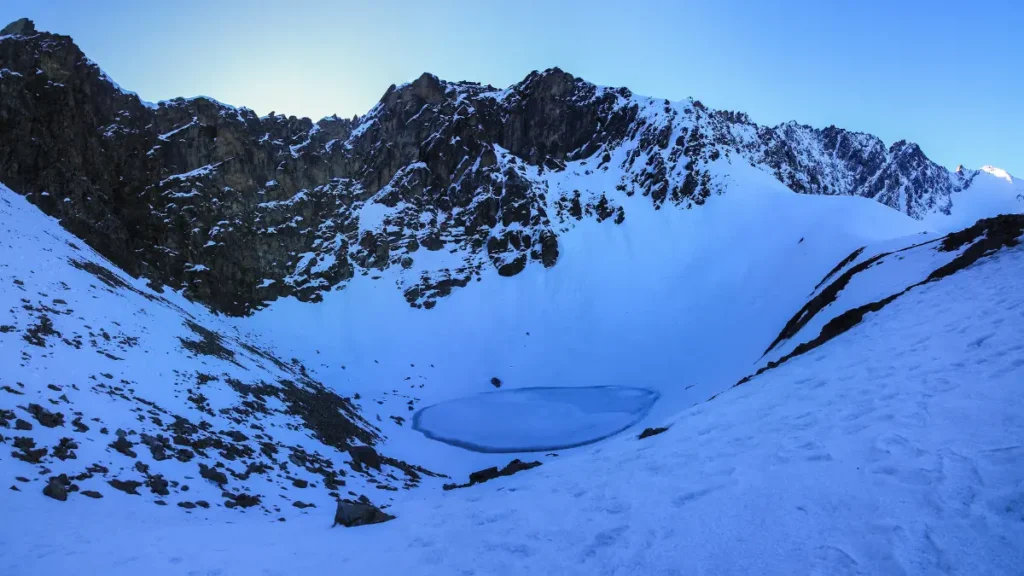
Roopkund Trek Cost
If you choose a Roopkund trek package, the hike will cost you around Rs. 15,000, including accommodation and meals. The trek will cost you around Rs. 25,000 if you go solo.
Conclusion
Roopkund, nestled in the heart of the Himalayas, comes with its breathtaking beauty and formidable obstacles. The skeleton lake, immaculate meadows, and difficult climbs are testaments to fortitude. Imagine the real-life exhilaration awaits those who dare as you read these lines. Respond to the call of the mountains; prepare for your journey. Let Roopkund write a triumphant chapter in your life. The path awaits you, calling you to Roopkund as your next victory. Set off on this journey, let the Himalayas enthral you, and make lifelong memories. Happy travels!



